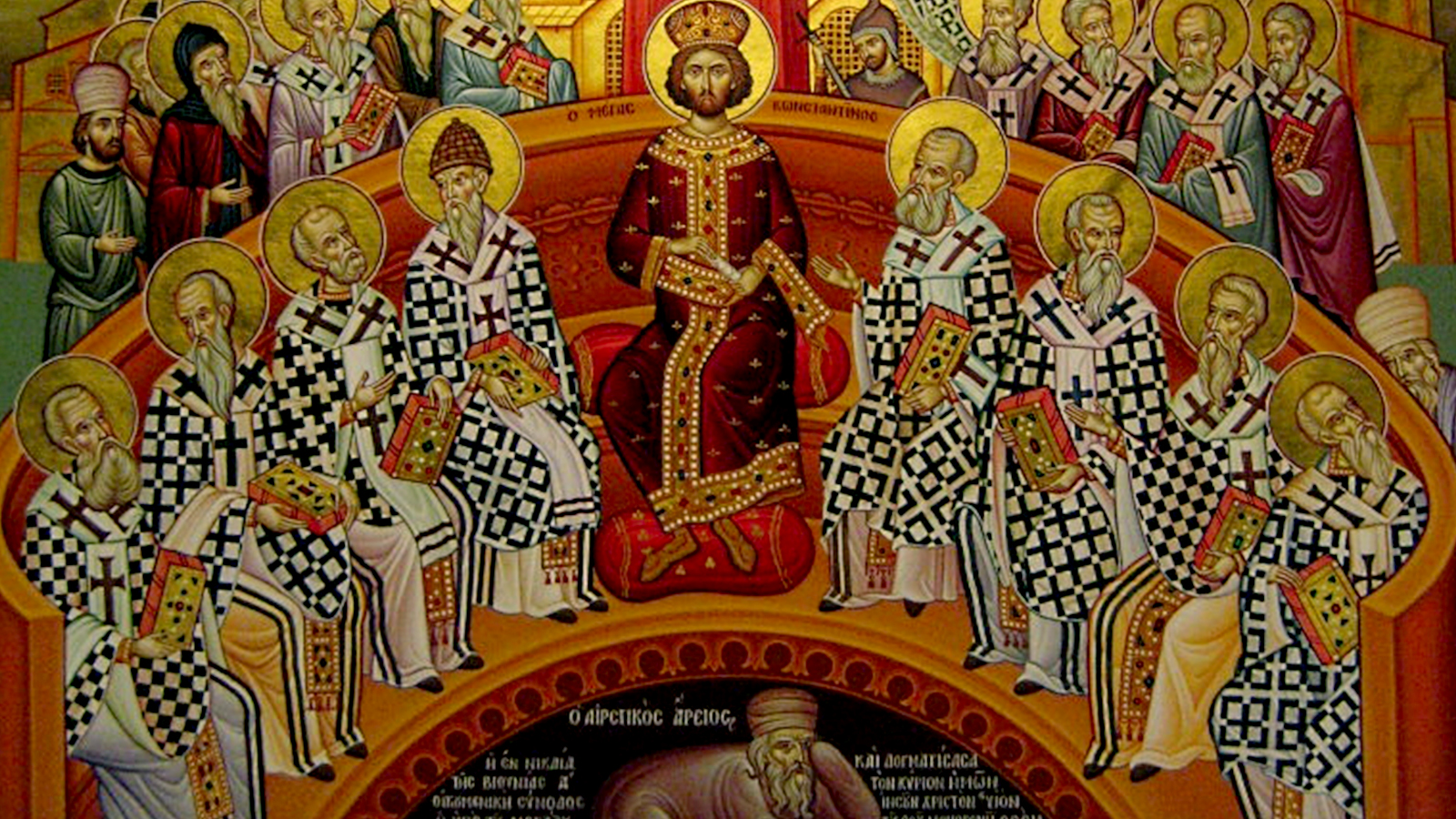On the Trinity
Modalism
Who taught it? Sabellius (3rd century)
What is it? God is only one divine being, who plays different roles at different times. The Father, Son, and Holy Spirit are not distinct persons of the same essence, but different modes or expressions of a single person. Modalism naturally leads to Patripassianism—the belief that the Father literally suffered on the cross.
Key text? Philippians 2:6: “. . . being in the form of God . . .”
Where does it show up today? Oneness Pentecostalism believes that God’s three modes of existence can act simultaneously, though God is still only one person.
Subordinationism
Who taught it? Eusebius of Caesarea (263–339)
What is it? The Son and the Spirit are divine persons, distinct from the Father but inferior to him. All three persons are truly God, but they exist in a hierarchy of power and authority.
Key text? Matthew 26:39: “. . . not as I will, but as you will.”
Where does it show up today? According to a 2014 LifeWay Research study, 22 percent of evangelicals believe the Father is more divine than the Son.
On Jesus Christ
Arianism
Who taught it? Arius (c. 256–336)
What is it? The Son as Word (Logos, in Greek) was created by God before time. He is not eternal or perfect like God, though he was God’s agent in creating everything else.
Key Text? John 1:14: “The Word [is] the only Son, who came from the Father.”
Where does it show up today? Jehovah’s Witnesses believe Jesus is God’s only direct creation, and that everything else was created by Christ. Jesus died for our sins, but he is not equal with God, who is not part of a Trinity.
Docetism
Who taught it? Docetai, a Gnostic sect (2nd and 3rd centuries)
What is it? The divine Christ would never stoop to touch flesh, which is evil. Jesus only seemed (dokeo, in Greek) human and only appeared to die, for God cannot die. Or, the divine Christ left the human Jesus before the Crucifixion.
Key text? Philippians 2:8: “. . . and being found in appearance as a man . . .”
Where does it show up today? Docetism by and large has been defeated, though many pastors report confusion among their congregants regarding Christ’s full humanity.
Adoptionism
Who taught it? Paul of Samosata (3rd century)
What is it? Jesus was a mere man before his baptism, when the Father adopted him as his Son. The Father and Son are of different natures—the Father preexistent and eternally divine, and the Son born as Jesus and adopted into the Father’s plans, but never one in essence with the Father.
Key text? Luke 3:22 (in some ancient versions): “You are my beloved Son; today I have begotten you.”
Where does it show up today? Adoptionism by and large has been defeated.
Apollinarianism
Who taught it? Apollinaris of Laodicea (4th century)
What is it? Jesus is not equally human and divine, but one person with one nature. In Jesus’ human flesh resided a divine mind (he didn’t have a human mind). Thus, Jesus was only two-thirds human.
Key text? John 1:14: “The Word became flesh” [and not a human mind].
Where does it show up today? Apollinarianism by and large has been defeated, though many pastors report confusion among their congregants regarding Christ’s full humanity.
On the Holy Spirit
Pneumatomachianism
Who taught it? Semi-Arians (4th century)
What is it? During the latter half of the fourth century, sects like Semi-Arians and Pneumatomachi (Greek for “Spirit fighters”) believed the Spirit was of a different essence from the Father and the Son. Some said the Spirit was a creature, and others understood the Spirit to be a force or power, not a person.
Key text? Acts 1:8: “. . . you will receive power when the Holy Spirit comes on you . . .”
Where does it show up today? Among Jehovah’s Witnesses—but also among evangelicals. The 2014 LifeWay study reported that 51 percent of evangelicals believe the Holy Spirit is a force.
Read CT's cover story: "The Truth About Heresy"










